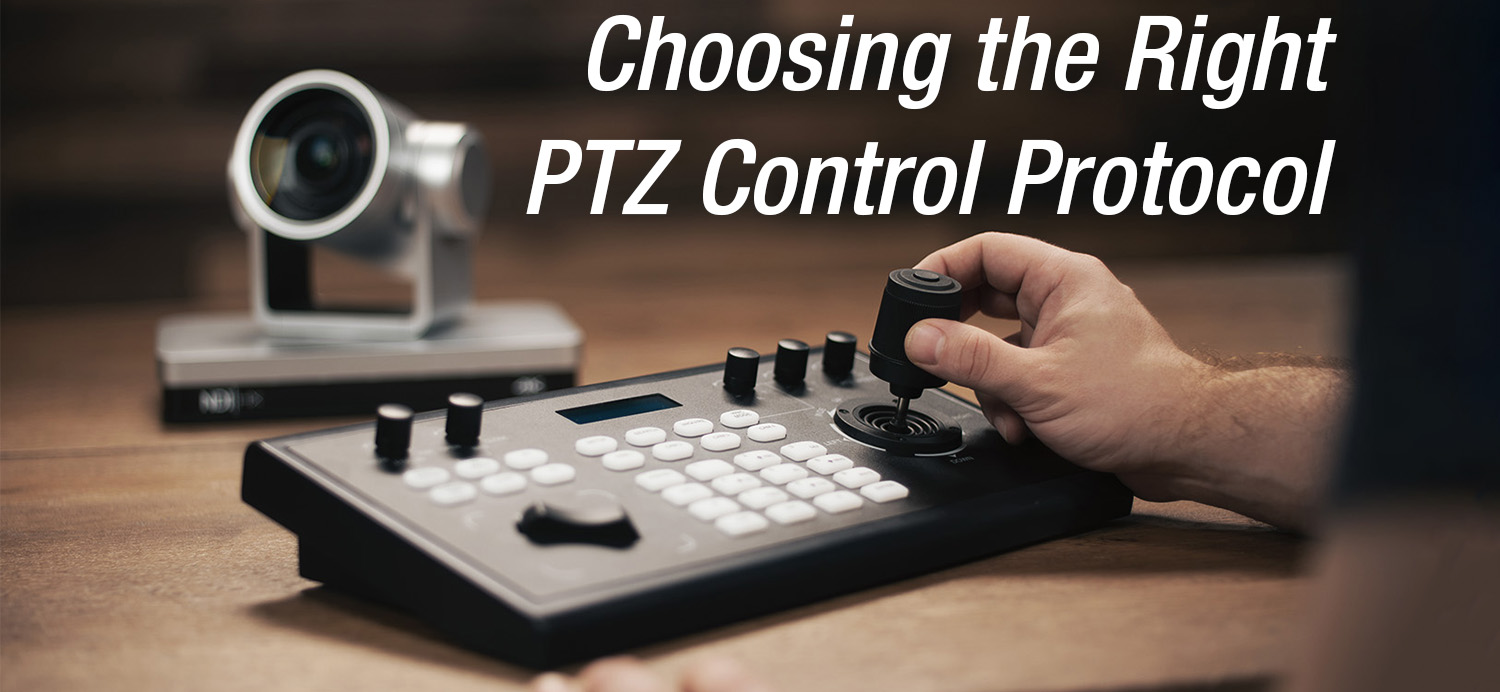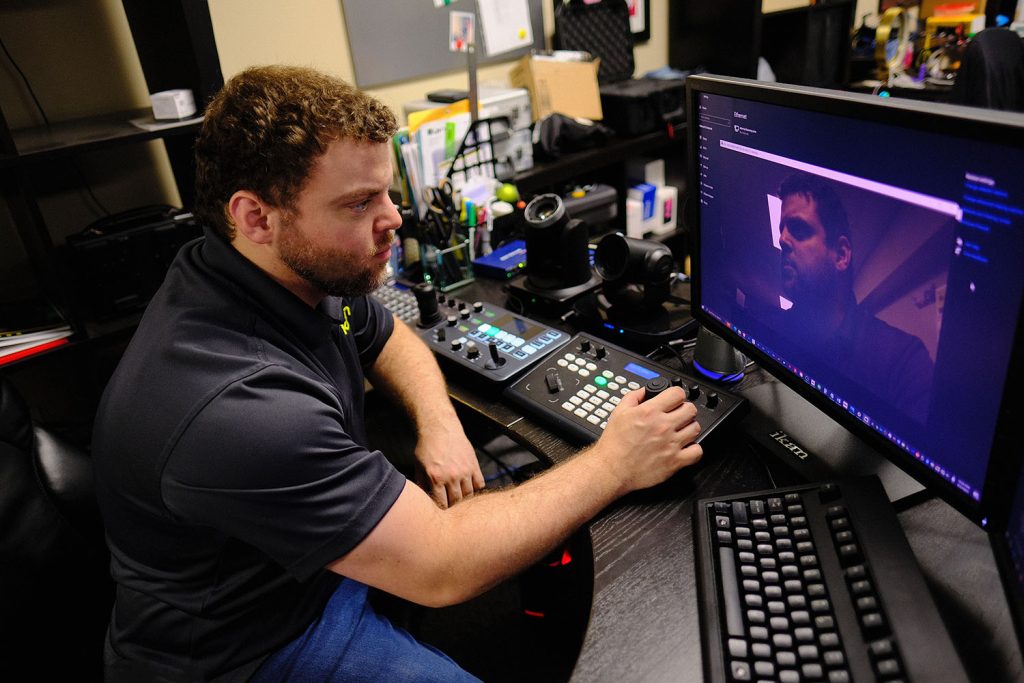
We break down six different PTZ control protocols to help you determine the most suitable one for your application.
PTZ cameras are a popular choice for various applications, including broadcasting, live streaming, video conferencing, and security. To harness the full potential of PTZ cameras, it’s crucial to understand the different control protocols available. We’ll be exploring six prominent PTZ protocols, namely Serial Port VISCA, IP VISCA, ONVIF, PELCO-D, PELCO-P, and NDI. Each protocol offers unique advantages, and selecting the right one depends on your specific needs and system requirements.

Testing various protocols using the OTTICA PTZ Controller
Serial Port VISCA
Serial Port VISCA is the traditional method of controlling PTZ cameras through the Video System Control Architecture (VISCA) protocol. It relies on a direct physical connection between the camera and the control device, using either RS-232 or RS-422 serial communication. This setup allows for reliable and precise control over the camera’s movements, zoom, and other functions. However, the limited range of serial communication requires the control device to be in close proximity to the camera. Signal converters or repeaters may be necessary to extend the distance. While Serial Port VISCA is a solid option for fixed installations, it might not be the best choice for remote or distributed camera setups.
IP VISCA
IP VISCA, on the other hand, uses the same VISCA protocol but leverages an IP (Internet Protocol) network for communication. This approach provides greater flexibility as it allows PTZ cameras to be controlled remotely from any location within the same network or even over the internet. The PTZ camera must support IP connectivity (via an Ethernet port), and a controlling device can send VISCA commands to the camera’s IP address. IP VISCA is particularly advantageous for large-scale installations, where central control of multiple PTZ cameras from a single location is desirable. The versatility and scalability of IP VISCA make it a popular choice for modern PTZ camera systems.
ONVIF
Open Network Video Interface Forum (ONVIF) is not a specific PTZ protocol but an open standard that defines common communication protocols for IP-based video devices, including PTZ cameras. ONVIF ensures interoperability between different manufacturers’ devices and Video Management Systems (VMS). PTZ control with ONVIF involves using HTTP and SOAP protocols over the IP network. The advantage of ONVIF is that it allows for seamless integration of PTZ cameras from various manufacturers into a unified system. It simplifies system setup and management while promoting cross-platform compatibility.
PELCO-D
PELCO-D is one of the earliest and most widely used PTZ control protocols in the security industry. It uses ASCII-based commands sent via serial communication (typically RS-485) to control the camera’s movements, zoom, focus, and presets. PELCO-D offers simplicity and is well-supported by many camera models. However, it requires a direct serial connection, limiting its application in scenarios where remote control is needed.
PELCO-P
PELCO-P is another PTZ control protocol by PELCO, similar to PELCO-D but with binary-based commands. This binary format enables faster communication and more precise control over the camera’s functions. PELCO-P is often preferred in applications where rapid and accurate response times are crucial.
NDI
NDI-enabled PTZ cameras can transmit not only video but also control data over the same network connection using the NDI protocol. NDI provides a set of standardized metadata keys and structures that can be used to embed control commands within the NDI data stream. These metadata keys are defined by the NDI SDK and documentation, ensuring compatibility between different NDI-enabled devices and software applications. This allows for remote control of PTZ functions and presets, from NDI-compatible control software or systems. This makes it possible to integrate PTZ cameras seamlessly into NDI-based video production workflows and remotely control them alongside other NDI sources. If your production setup already utilizes NDI-enabled equipment and software, using NDI for PTZ cameras ensures compatibility within the existing ecosystem. Aside from traditional PTZ controllers and on-screen controls, the ‘NDI Monitor’ software also allows you to control an NDI-compatible camera’s PTZ along with other camera functions using a USB game controller.
Choosing the right PTZ control protocol is essential to ensure smooth and efficient camera operation in your specific application. If you require precise control and have a fixed setup, Serial Port VISCA might be suitable. For remote control and central management, IP VISCA and ONVIF are excellent choices. Additionally, in modern video production workflows, NDI offers seamless integration and real-time control capabilities. Meanwhile, PELCO-D and PELCO-P protocols provide simplicity and reliability for dedicated security solutions. Consider the specific needs of your PTZ camera system, the capabilities of your cameras, and the integration requirements with other devices to make an informed decision. Remember, the right protocol can greatly enhance the performance and versatility of your PTZ camera system.
